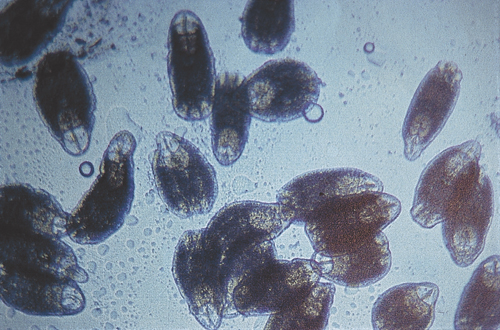Difference between revisions of "Ornamental Fish Q&A 17"
Jump to navigation
Jump to search
Ggaitskell (talk | contribs) |
|||
| Line 12: | Line 12: | ||
|q2=With what clinical lesions are they associated? | |q2=With what clinical lesions are they associated? | ||
|a2= | |a2= | ||
| − | As its common name suggests, this organism has a predilection for the eye and | + | As its common name suggests, this organism has a predilection for the eye and may cause cataracts and blindness. The life cycle is completed when the secondary host in which the metacercariae are encysted is eaten by the specific primary host higher up the |
food chain. | food chain. | ||
|l2= | |l2= | ||
Revision as of 13:05, 28 September 2011
| Question | Answer | Article | |
| What are the organisms seen in the photograph? | These organisms were found in the eye of a marine fish. They are metacercariae of the eye fluke (Diplostomum sp.). |
[[|Link to Article]] | |
| With what clinical lesions are they associated? | As its common name suggests, this organism has a predilection for the eye and may cause cataracts and blindness. The life cycle is completed when the secondary host in which the metacercariae are encysted is eaten by the specific primary host higher up the food chain. |
[[|Link to Article]] | |
